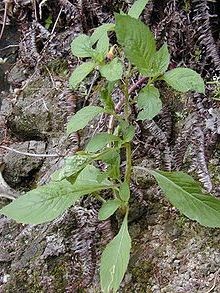Bush Butter Tree
(Pachylobus edulis)

Description
Dacryodes edulis is a fruit tree native to Africa, sometimes called safou (Republic of the Congo, Democratic Republic of the Congo and Angola), prune (Cameroon), atanga (Equatorial Guinea and Gabon), ube (Nigeria), African pear, bush pear, African plum, nsafu, bush butter tree, or butterfruit. Dacryodes edulis is an evergreen tree attaining a height of 18–40 meters in the forest but not exceeding 12 meters in plantations. It has a relatively short trunk and a deep, dense crown. The bark is pale gray and rough with droplets of resin. The leaves are a compound with 5-8 pairs of leaflets. The upper surface of the leaves is glossy. The flowers are yellow and about 5 mm across. They are arranged in a large inflorescence. The fruit is an ellipsoidal drupe which varies in length from 4 to 12 cm. The skin of the fruit is dark blue or violet, whereas the flesh is pale to light green. The tree flowers at the beginning of the rainy season and bears fruits during 2 to 5 months after flowering. There are two variants of Dacryodes edulis: D. e. var. edulis and D. e. var. parvicarpa. The fruit of D. e. var. edulis is larger and the tree has stout, ascending branches. D. e. var. parvicarpa has smaller fruit and slender, drooping branches. The preferential habitat of D. edulis (Safou)is a shady, humid tropical forest. However, it adapts well to variations in soil type, humidity, temperature and day length. The natural range extends from Angola in the South, Nigeria and Sierra Leone in the West and Uganda in the East. It is also cultivated in Malaysia.
Taxonomic tree:







